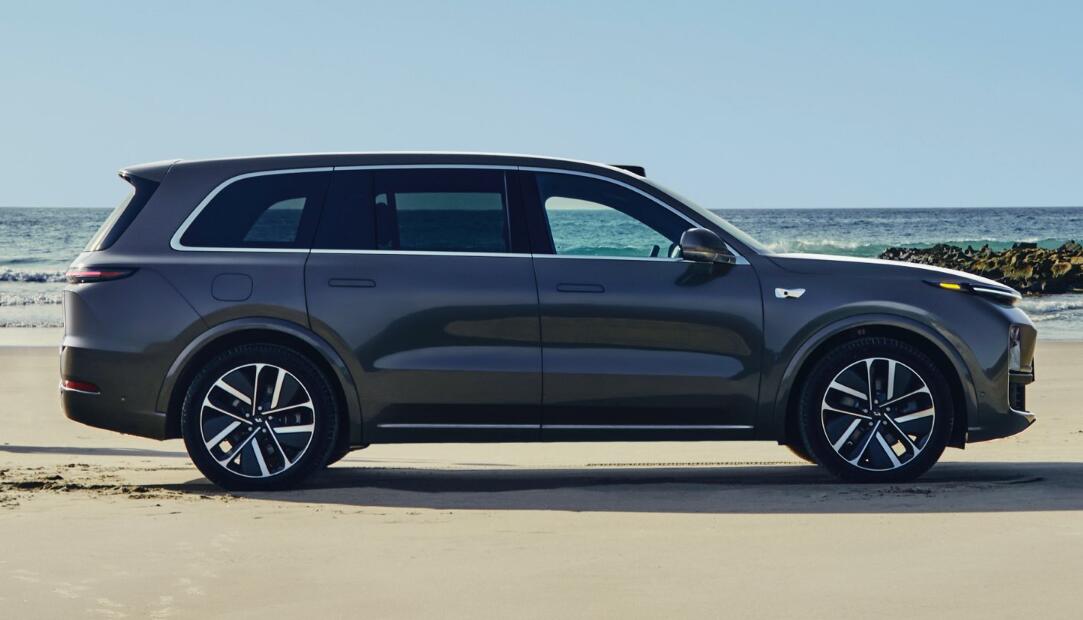Navigating The Complexities: How Luxury Automakers Are Addressing The China Market

Table of Contents
Understanding the Unique Demands of the Chinese Luxury Consumer
The Chinese luxury consumer is not a monolith. Successfully penetrating this market requires a deep understanding of their unique desires and preferences, going beyond simply offering a high-price tag.
Beyond the Price Tag: Status and Social Signaling
Brand prestige and image are paramount in China. Luxury car ownership transcends mere transportation; it's a powerful statement of success and social standing.
- Brand Prestige: Established luxury brands with a strong global reputation hold a significant advantage. However, even established players must constantly reinforce their image.
- Social Media Influence: WeChat, Weibo, and other social media platforms are crucial for building brand awareness and engaging with potential customers. Influencer marketing plays a vital role.
- Appealing to Younger Consumers: The rising affluence of younger generations means luxury automakers need to connect with their unique values and preferences, often through digital channels and experiences.
- Status Symbols: Certain brands and models have become powerful status symbols in China. Automakers leverage this by carefully crafting their marketing messages and product offerings. For example, the association of specific models with celebrity endorsements or appearances in popular media significantly impacts their desirability.
Technological Preferences and Innovation
Chinese luxury consumers are early adopters of technology. Advanced features are not just desirable; they are expected.
- Autonomous Driving: Self-driving capabilities and advanced driver-assistance systems (ADAS) are highly sought-after.
- Connectivity: Seamless integration with smartphones and other smart devices is crucial. Personalized in-car entertainment and digital services are key differentiators.
- Localized Technology: Automakers must adapt their technology to meet the specific needs and preferences of the Chinese market, including language support and payment systems.
- Tech-Driven Sales: Features like advanced infotainment systems, augmented reality head-up displays, and personalized driver profiles are major selling points.
Localized Marketing and Communication Strategies
Effective marketing in China requires more than simple translation. It demands a deep understanding of Chinese culture and communication styles.
- Cultural Nuances: Marketing campaigns must resonate with Chinese cultural values and avoid any potential cultural missteps.
- Channel Selection: WeChat, Baidu, and other local platforms are critical for reaching target audiences. Traditional advertising methods may be less effective.
- Key Opinion Leaders (KOLs): Building relationships with influential figures on social media is crucial for generating buzz and building credibility.
- Successful Localization: Brands like BMW and Mercedes-Benz have successfully adapted their marketing to resonate with Chinese consumers through localized campaigns featuring Chinese celebrities and culturally relevant themes.
Overcoming Regulatory Hurdles and Infrastructure Challenges
Navigating the regulatory landscape and addressing infrastructure limitations are crucial for success in the China luxury auto market.
Navigating Import Tariffs and Regulations
High import tariffs and stringent regulations pose significant challenges.
- Minimizing Import Duties: Strategies like local manufacturing and strategic partnerships can help mitigate the impact of import duties.
- Regulatory Compliance: Meeting local safety and emission standards is non-negotiable. Failure to comply can lead to significant penalties and market exclusion.
- Local Manufacturing: Establishing manufacturing facilities in China offers significant advantages in terms of cost reduction and regulatory compliance.
Addressing Infrastructure Limitations
Infrastructure gaps, particularly concerning charging infrastructure for electric vehicles (EVs), present hurdles.
- Charging Infrastructure: The expansion of EV charging networks is crucial for the growth of the electric luxury vehicle segment in China.
- After-Sales Service: A robust and reliable after-sales service network is essential for building customer trust and loyalty.
- Logistical Challenges: Overcoming logistical hurdles in less developed regions requires careful planning and strategic partnerships.
Competition and Market Positioning in the China Luxury Auto Market
The China luxury auto market is highly competitive, with both domestic and international brands vying for market share.
Competing with Domestic and International Brands
The competitive landscape is intense.
- Competitive Analysis: Understanding the strengths and weaknesses of both domestic and international competitors is critical for effective market positioning.
- Differentiation: Luxury automakers must find ways to differentiate their offerings in a crowded marketplace, often through unique design, technology, or brand experiences.
- Niche Markets: Identifying and targeting specific niche market segments can provide a competitive advantage.
Building Brand Loyalty and Customer Retention
Exceptional customer service is paramount in the luxury sector.
- Customer Service Excellence: Providing personalized and exceptional customer service is crucial for fostering brand loyalty.
- Loyalty Programs: Rewarding loyal customers through exclusive programs and experiences can strengthen brand affinity.
- Data Analytics: Using data analytics to understand customer preferences and behaviors allows for more effective marketing and product development.
Conclusion
Successfully navigating the China luxury auto market requires a nuanced understanding of consumer preferences, regulatory landscapes, and competitive dynamics. Luxury automakers must prioritize localization, technological innovation, and exceptional customer service to achieve long-term success in this crucial market. By adapting strategies to meet the unique demands of Chinese consumers, and by effectively addressing the complexities involved, luxury brands can unlock significant growth opportunities in the burgeoning China luxury auto market. Learn more about mastering the intricacies of the China luxury auto market and achieving success within its dynamic landscape.

Featured Posts
-
 11th Inning Walk Off Bunt Sinks Royals Against Brewers
Apr 23, 2025
11th Inning Walk Off Bunt Sinks Royals Against Brewers
Apr 23, 2025 -
 Federal Investigation Millions Stolen Via Office365 Executive Account Hacks
Apr 23, 2025
Federal Investigation Millions Stolen Via Office365 Executive Account Hacks
Apr 23, 2025 -
 Diamondbacks Walk Off Win Stuns Brewers In Ninth Inning
Apr 23, 2025
Diamondbacks Walk Off Win Stuns Brewers In Ninth Inning
Apr 23, 2025 -
 Nine Stolen Bases Power Brewers To Rout As
Apr 23, 2025
Nine Stolen Bases Power Brewers To Rout As
Apr 23, 2025 -
 Pope Francis Signet Ring Its Fate After His Death Explained
Apr 23, 2025
Pope Francis Signet Ring Its Fate After His Death Explained
Apr 23, 2025
